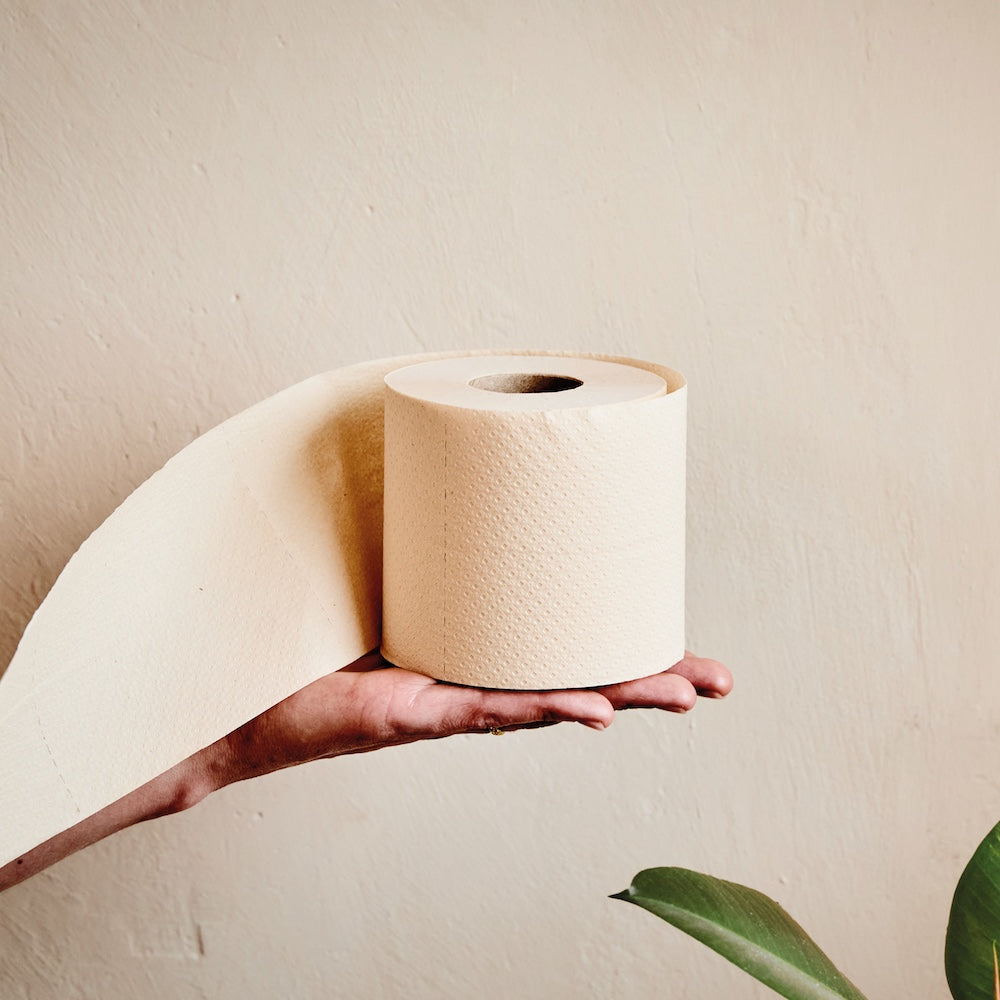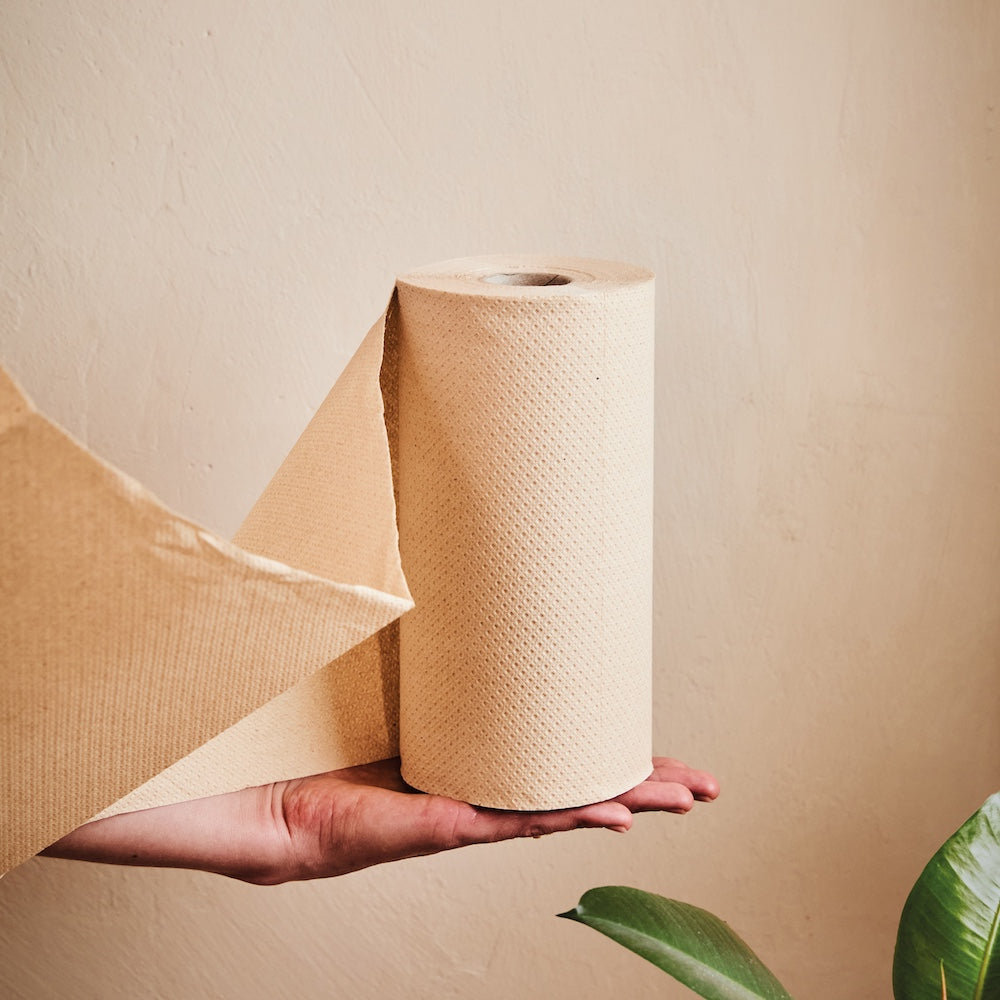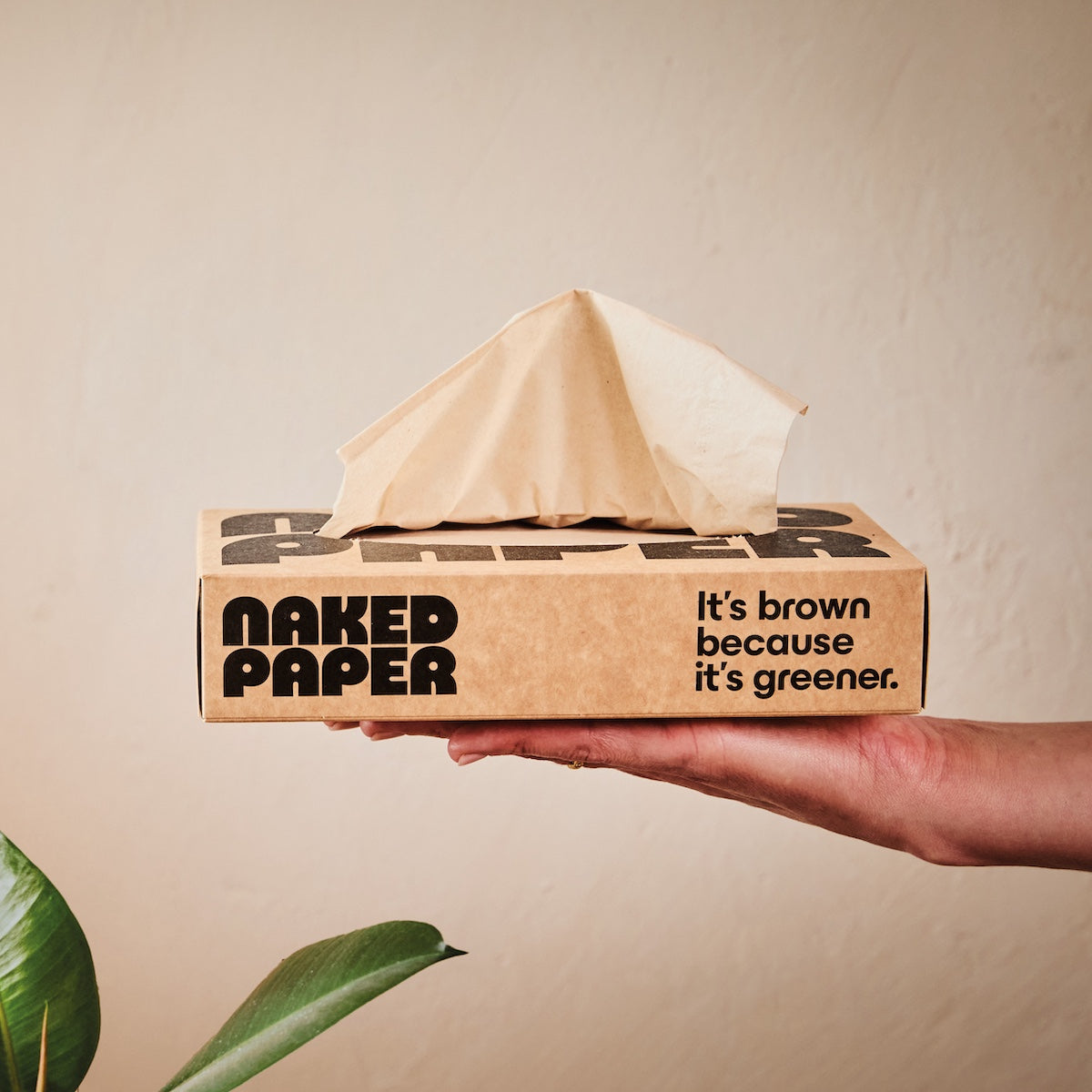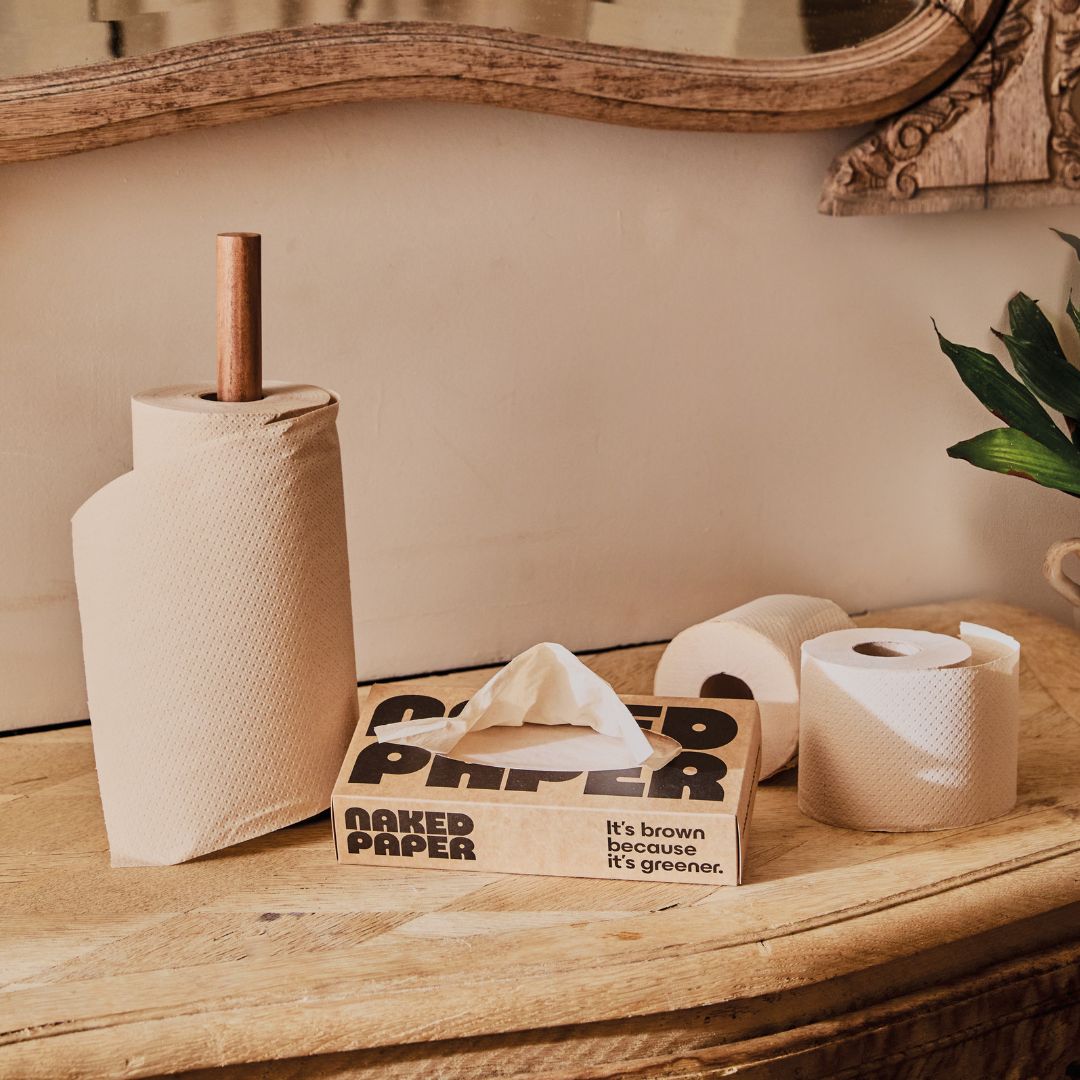Why is bleach-free toilet paper brown?

We like to say that we’re brown because we’re greener.
It has a nice ring to it, and it’s true. Our decision to go without bleach is one of many ways we break from the standard to make more sustainable tissue products.
So our soft toilet roll, kitchen paper towels, and facial tissues are not bleached white, but why, exactly, are they brown? Where does the brown colour of natural, unbleached tissue and paper come from?
Today we’re going deep on brown, tracing the natural colour of paper and tissue back to the original plant material.

Lignin: nature’s natural mortar
The brown colour in unbleached paper products is primarily due to a natural compound called lignin. Lignin is found in all plants, but there’s much more of it in trees and timber sources than in green plants, fruit, and vegetables.
In very simple terms, we can imagine the body of a plant or a tree as a wall made up of bricks of fibre (cellulose) which are held together using mortar (lignin). Lignin helps to bind cellulose, and this gives plants rigidity so they can stand against gravity. Lignin is naturally a brown colour, particularly after it is exposed to oxygen, while pure cellulose is white.
As you might expect, there is much more lignin in trees and bamboo, which can grow very tall and upright, than there is in softer grass and leafy plants.

What is the natural colour of paper?
When we make paper, whether using wood or bamboo, it’s the cellulose we’re after, the “bricks” of the plant. But the lignin and cellulose are a package deal; if we chop down a tree into planks, or cut the long stems of bamboo, the chunks of timber we end up with contains both.
To make paper or tissue, we first break down the raw materials. In the case of our bamboo tissue products, this means that stems of harvested bamboo are “chipped,” or chopped up very small. After this, they are “cooked”, mixed with water and salts and boiled. This cooking process untangles the bonds in the wood, releasing the pale cellulose fibre from the darker brown lignin that’s been binding it together.
You end up with pulp that is mostly cellulose, but not entirely. Some remnants of the lignin will still be in the mix, and so at this stage the pulp is a pale brown.
If we were making bleached paper, this is where we would start to add bleach to completely remove the last of the lignin. But for bleach-free products, this stage is skipped entirely and we move on to pressing and drying the pulp.

Processing the pulp to make toilet paper
So we’ve chopped up bamboo, cooked it, and skipped the bleach. We have a large amount of wet pulp that’s a natural pale brown colour from the remnants of the lignin that are still present.
At this stage the pulp is pressed and dried into blocks called “pulp board bales.” These dehydrated blocks are lightweight and, because they’re blocks, they can be transported efficiently. We only use unbleached pulp bales to make Naked Paper, which, like the pulp, are pale brown in colour.
The pulp bales come to our factory where we use them to manufacture bleach-free toilet paper, tissues, and kitchen paper towels. The bales are broken down and mixed with water, pressed into sheets, and dried on huge heated rollers before being cut to size as rolls and sheets.
At Naked Paper, all of the energy for this part of the process, from the electricity running through our machines and lights to the vast amounts of heat that dries the tissue, comes from renewable, fossil fuel-free sources.
At the end of the line we have unbleached bamboo tissue products, which are a pale brown. The last of the lignin is still along for the ride.

What about our recycled toilet paper?
We use two types of raw materials to make our toilet paper: bamboo and recycled paper and cardboard.
So far we’ve been talking about bamboo, which travels from forest to factory with some of the brown lignin still in place. But our Naked Paper recycled rolls are also brown. These aren’t made from bamboo, so where is the lignin coming from?
It’s a good question! Most recycled toilet paper is made from printed materials, like old office paper, till receipts, and leaflets. These different kinds of paper products share an important quality; all of them come from pulp that has originally been bleached white, so that whatever is printed on them will show up clearly.
But when you take a pile of leaflets and printed paper and mash them up to make pulp, the original white paper fibre mixes with all of the ink that was printed on it, and you end up with grey pulp. People don’t want to buy grey toilet rolls, so nearly all recycled toilet paper manufacturers will bleach this pulp to a bright white before turning it into tissue.
Once again, we’ve gone a different way. Naked Paper recycled toilet paper is made from old packaging materials like kraft paper and cardboard boxes, that are collected from supermarkets within 85km of our factory. These materials haven’t been bleached in the first place; like the bamboo pulp bale we use, they hold on to traces of their original lignin. This means they start brown, and they stay that way as we turn them into bleach-free toilet paper.

Eco toilet roll that’s naturally brown
So, why is Naked Paper brown? Because we’ve chosen not to strip all the nature away from our products. We offer soft coloured toilet paper, tissues, and kitchen rolls that get their shades from nature rather than bleach or dyes.
Because we don’t bleach away all of the lignin from the cellulose we use, our tissue still has some of the natural character of the raw materials, and our products have less impact on the environment. Going without bleach means that unnecessary chemical products aren’t being manufactured, packaged, and transported, and they’re not ending up in waterways.
Whether it’s unbleached bamboo or recycled cardboard, the pale brown colour is a sign that we do things differently, and it’s just the start of how we work to make affordable toilet paper that’s better than the standard.
Want to try tissue products complete with natural lignin?
Recent blog posts
-

Introducing recycled kitchen roll and tissues
At Naked Paper, we like to think that change can happen in the most everyday parts of life. In fact, the everyday parts of life, like toilet rolls for example, are often the best place to make changes. When daily-use...
-

What goes into our tissue products?
We don’t say that Naked Paper tissue products are “chemical free,” because everything is made of chemicals. The natural pine sap glue that holds our tissue plies together is, strictly speaking, a chemical compound. So is water. What we do say...
-

Bamboo viscose vs bamboo tissue: what's the environmental difference?
Lots of us are growing more and more aware of the chemical footprint of the things we use every day. Mountains of industrial waste and the contamination of soil, air, and water are a concern for us all. At Naked...







